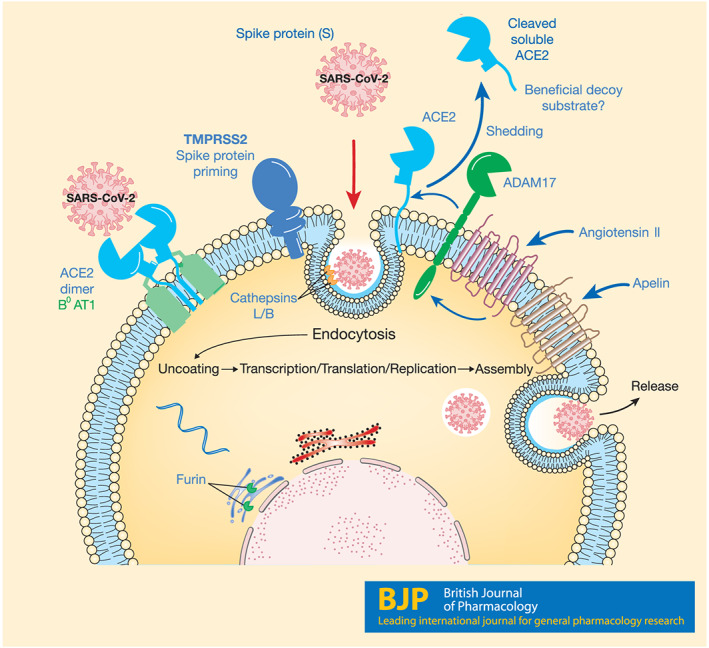FIGURE 1.

The SARS‐CoV‐2 life cycle. The novel virus uses ACE2 to attach to target cells, including epithelial and endothelial cells, particularly in the lungs. SARS‐CoV‐2 requires the camostat‐sensitive serine proteinase TMPRSS2 to prime the spike protein for fusion and internalization. Thereafter, host cellular processes are exploited for viral replication and release from the cell. ACE2 is also expressed in high levels in the GI tract, where it is associated with B0AT1/SLC6A19 that actively transports neutral amino acids across the apical membrane of epithelial cells. The serine proteinase ADAM17, present on cell surfaces, cleaves ACE2 to release an ectodomain of ACE2, including the active site, into the circulation. This circulating form of ACE2 may also bind SARS‐CoV‐2, but this complex is predicted not to internalize and therefore could be exploited as a beneficial viral decoy. Recombinant ACE2 (GSK2586881) has been tested in Phase 2 clinical trials for the potential treatment of acute respiratory distress syndrome, but it is not yet established if the compound will reduce viral load by acting as a decoy
